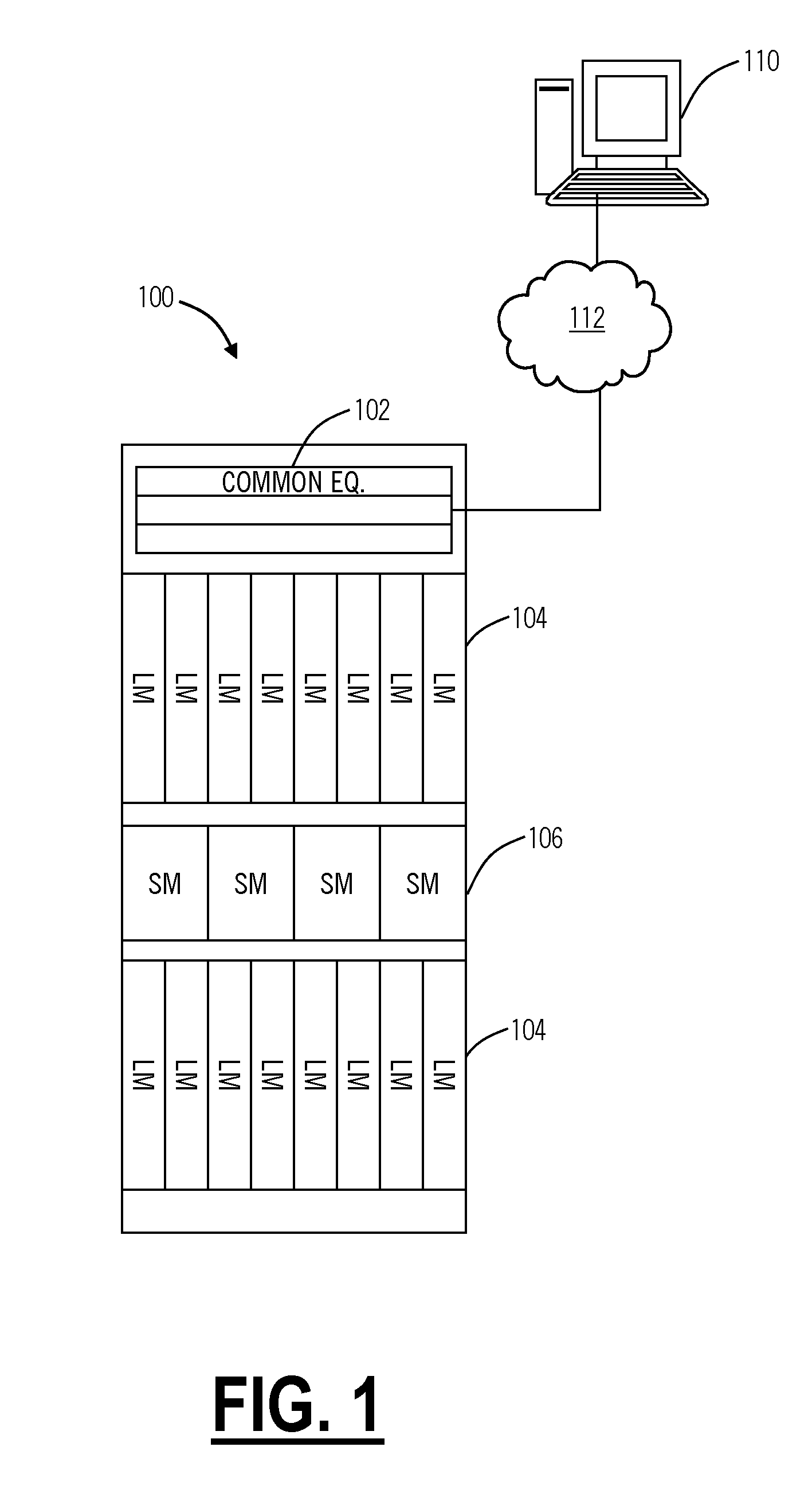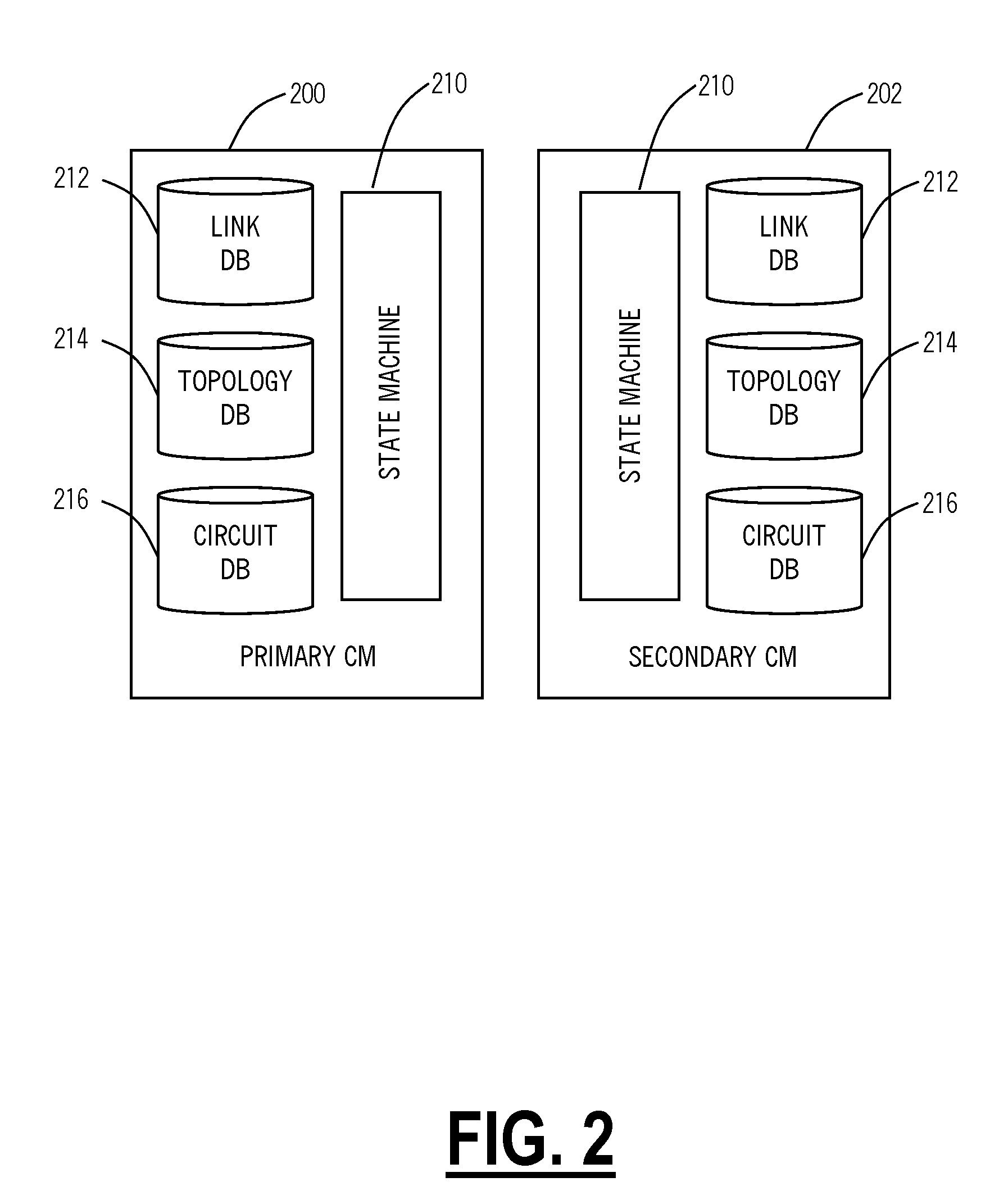Bandwidth defragmentation systems and methods in optical networks
a bandwidth defragmentation and optical network technology, applied in the field of optical networks, can solve the problems of poor or less than optimal bandwidth utilization, less revenue return on investment for service providers, and inability to meet the bandwidth requirements of a new connection with a higher bandwidth, so as to avoid bandwidth fragmentation, improve network utilization, and avoid bandwidth fragmentation
- Summary
- Abstract
- Description
- Claims
- Application Information
AI Technical Summary
Benefits of technology
Problems solved by technology
Method used
Image
Examples
Embodiment Construction
[0015]In various exemplary embodiments, the present invention provides bandwidth defragmentation systems and methods in optical network such as OTN, SONET, SDH, Ethernet, and the like. In particular, the present invention includes bandwidth defragmentation algorithms that may be used within the context of a signaling and routing protocol to avoid bandwidth fragmentation. As such, the present invention defines a mechanism for computing an end to end path for a connection in a manner that avoids bandwidth fragmentation and provides for better network utilization. For example, the present invention may include a path computation based upon administrative weight and upon fragmentation costs. This may be implemented in existing signaling and routing protocols without changes to existing protocol messages used in topology discovery. Further, the present invention optimizes available bandwidth allowing a higher probability of higher bandwidth request being admitted. The present invention c...
PUM
 Login to View More
Login to View More Abstract
Description
Claims
Application Information
 Login to View More
Login to View More - R&D
- Intellectual Property
- Life Sciences
- Materials
- Tech Scout
- Unparalleled Data Quality
- Higher Quality Content
- 60% Fewer Hallucinations
Browse by: Latest US Patents, China's latest patents, Technical Efficacy Thesaurus, Application Domain, Technology Topic, Popular Technical Reports.
© 2025 PatSnap. All rights reserved.Legal|Privacy policy|Modern Slavery Act Transparency Statement|Sitemap|About US| Contact US: help@patsnap.com



